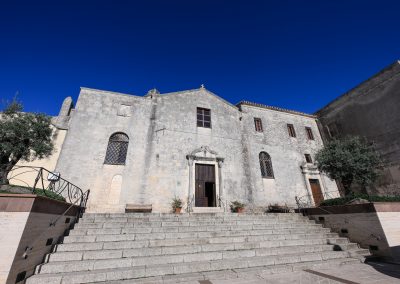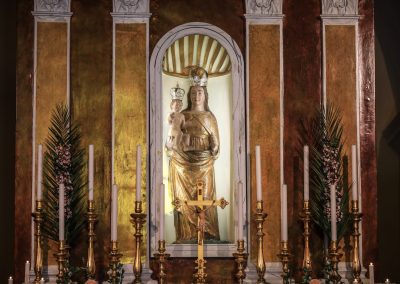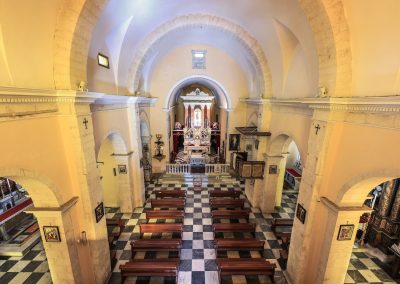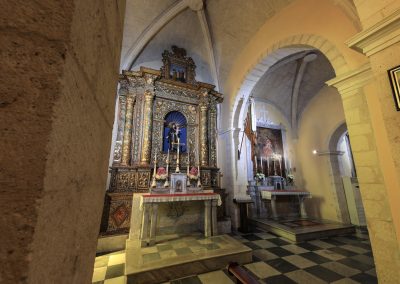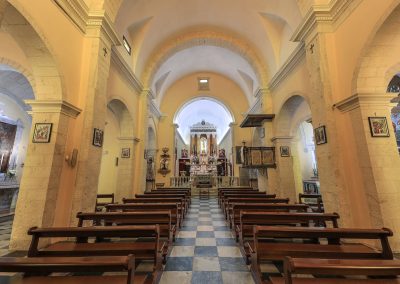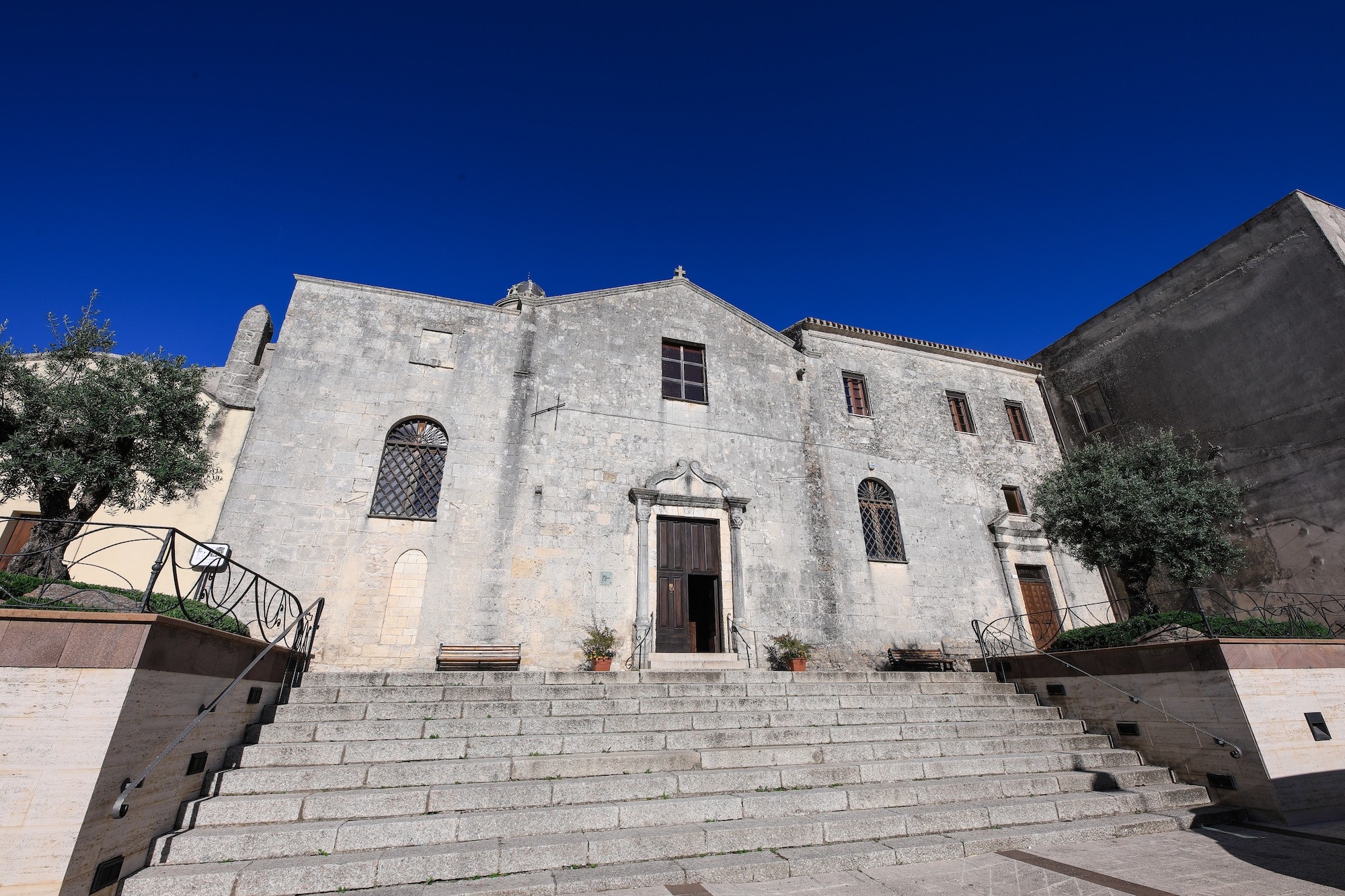
Florinas
Parish church of the Assumption of the Virgin Mary
The Parish church of the Assumption of the Virgin Mary is located in the square called piazza del Popolo, in Florinas. The main façade of the building was made in 1630 with local limestone. It presents an entrance portal with architrave and moulded gable above, two grooved columns on either side with rhombus reliefs at their bases. The capitals are embellished with stylised acanthus leaves and both direct the eye to the gable. They were both made by local artisans. In line with the entrance portal there is a square opening to illuminate the inside. The roof has a little cross on its uppermost part and a slight frame along its two slopes. The inside of the church follows the typical plan of the 17th century, with a single nave and chapels interconnected through open arches. The first chapel on the left has a wooden altar in which there is a central niche outlined by spirals and winged heads, that highlight the statue of Saint Anthony of Padua. The retable (tn* an ornamental screen-like structure above and behind an altar, especially one used as a setting for a religious picture or carving) reveals the handicrafts of the workshops of the 18th century influenced by Iberian culture. The second chapel on the left shows the Madonna of the Carmel with souls from purgatory, while the marble icon of the third chapel on the left is dedicated to Our Lady of Lourdes. In the apsal area, the main altar dates back to 1877 and 1879. It was commissioned by Don Michele Oppia, who was working in the church at the time. The wooden statue of the Virgin with Child kept in the niche, reminds us of the Iberian culture of previous centuries. Behind the main altar there is the wooden choir that has five stalls per side. Its reredos is divided by half pillars with friezes topped with capitals, work done by local carvers at the beginning of the 1700s. From the registers of the Parish the pulpit dates back to 1801 and was made by an artisan from Sassari. The fourth altar on the right, carved and polychrome, has a painting in the centre portraying the three Martyrs from Porto Torres: Gavinus is depicted in armour of the Roman army and a banner on which there is a tower; Protus and Januarius on his sides. This painting is cut at the bottom to include a niche with the Madonna of Pompei. Under the table of the altar, inside the wide glass showcase, the Virgin Mary lies in the position taken from the Dormitio Virginis. The presence of the silver halo and of the nineteenth-century dress makes us believe it dates back to then. The second chapel on the right contains the precious canvass dedicated to Saint Aloysius Gonzaga in Adoration of the Virgin, commissioned in the 18th century to an unknown Sardinian artist.
Source: Art in Florinas (in Italian), by Wally Paris

